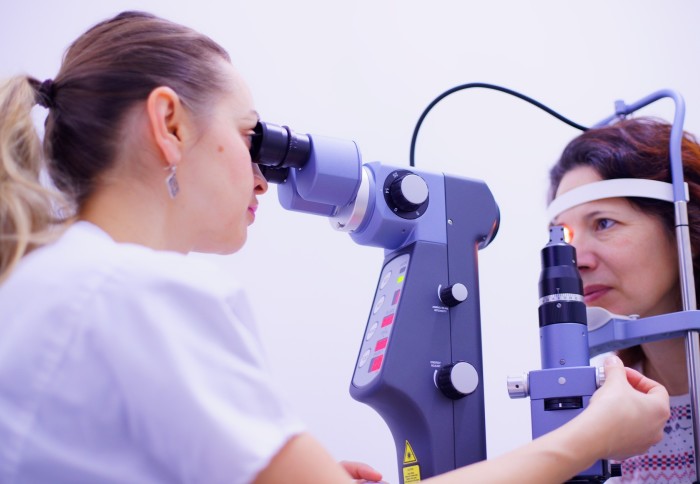Predicting Wet Macular Degeneration with DARC AI Biomarker

A new study has found that a DARC AI biomarker can predict new wet AMD lesions up to 36 months in advance of them occurring.
The study, led by the Department of Surgery and Cancer's Professor Francesca Cordeiro, used the biomarker DARC AI to recognise wet age-related macular degeneration (AMD), identifying the very earliest development of new blood vessel leakage and formation, even before the patient has symptoms.
Wet age-related macular degeneration (AMD) is a blinding disease that until only very recently was untreatable. However, a recognised challenge that still exists with its treatment, is the ability to identify the disease early enough to avoid any vision loss.
Currently, the diagnosis of wet AMD relies on the patient developing symptoms, which then leads them to seek advice from a clinician. Initially, the patient becomes aware of distortion in their vision, normally interfering with their reading. Very quickly, this progresses to complete central vision loss, which can be extremely troubling to elderly patients who will fear blindness and loss of independence.
The introduction of new treatments to target leaking and new blood vessel formation has led to a much improved results for patients, for a disease that over 20 years ago was regarded as untreatable. However, the results could be even better if treatment could be started in the very earliest stages of the disease.
The biomarker DARC has been developed by Professor M Francesca Cordeiro’s groups at Imperial College London and University College London, through Wellcome Trust funding, and has recently been combined with artificial intelligence developed by Novai Ltd.
The study uniquely highlights endothelial cells under stress in vivo, and convincingly demonstrated in a model of new vessel formation in the retina. These stressed cells then predict future wet AMD activity with the formation of leaking and new blood vessels seen in patients 3 years later, using conventional retinal imaging with Optical Coherence Tomography.
Professor Cordeiro says: “These results are very promising as they show DARC could be used as a biomarker when combined with the AI-aided algorithm. Basically what that means was DARC was able to predict new wet AMD lesions up to 36 months in advance of them occurring and that is huge - it means that DARC activity can guide the clinician into treating more intensively those patients at high risk of new lesions of wet AMD and also be used as a screening tool.”
Predicting wet age-related macular degeneration (AMD) using DARC (Detecting Apoptosing Retinal Cells) AI (artificial intelligence) technology. Corazza P, Maddison J, Bonetti P, Guo L, Luong V, Garfinkel A, Younis S, Cordeiro MF. Published in Expert Review of Molecular Diagnostics
Article text (excluding photos or graphics) © Imperial College London.
Photos and graphics subject to third party copyright used with permission or © Imperial College London.
Reporter
Benjie Coleman
Department of Surgery & Cancer